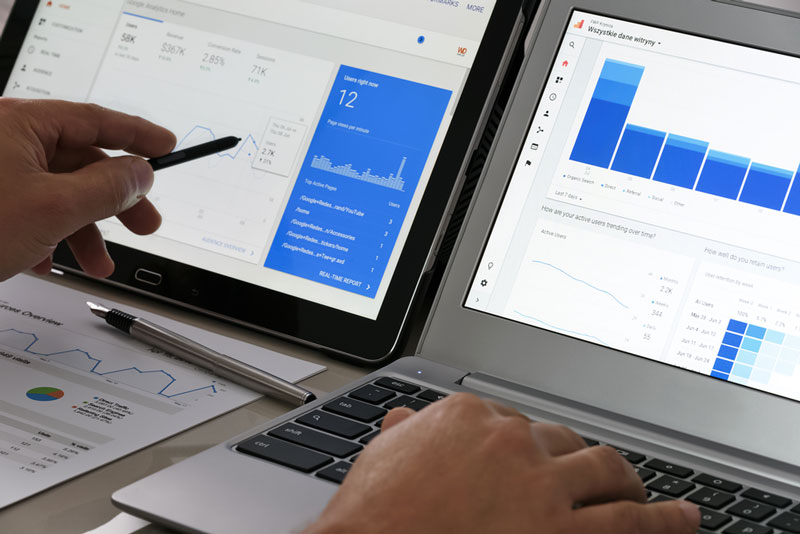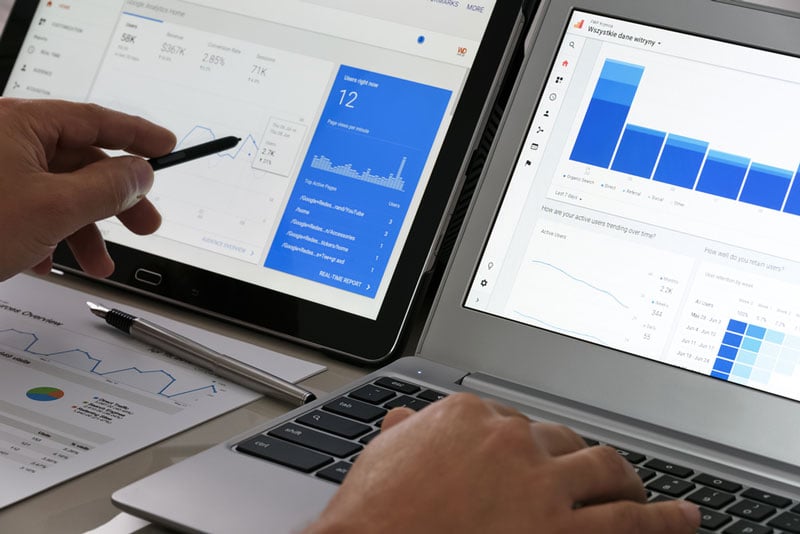Missouri Marketing Resource Blog

The Role of Analytics in Measuring Website Performance

Website analytics are crucial for measuring performance and achieving digital marketing goals by analyzing user behavior and key metrics. Read below to learn even more about the significance of website analytics and the valuable insights it provides that you might be missing out on when it comes to your current website performance:
Understanding Website Analytics
Before looking deeper into what website analytics can tell you about your website performance, it’s important to understand what the term website analytics means in the first place. To put it simply, website analytics involves collecting, measuring, and analyzing data on website usage and visitor behavior. This information will help you make the best data-driven decisions, improving your online presence and enhancing user experiences.
In other words, this gives you a snapshot of what your website visitors like and what they don't like. It’s important to know what key factors to look for, though, as contemplating the data of your website analytics can become overwhelming. Instead, it’s helpful to focus on key factors that you want to address, like bounce rate from your home page or how many new and returning visitors you are garnering. You want to understand what the data tells you and then use this information to change your website to make it more user-friendly.
Tracking Key Metrics
Speaking of key metrics, it’s important to use this data to track key performance indicators, known in the industry as KPIs. These are essential elements that indicate whether a website is performing well or not. Common metrics to look for that are good indicators of a website’s success are metrics like website traffic, the aforementioned bounce rate, the conversion rate, and average time on page and exit pages. All this data will help you determine what site visitors are looking at when on your site, what is holding their attention, what isn’t working so well, and what you could do to improve things. The following is a more detailed breakdown of a few quantitative KPIs that can tell you a great deal about your user experience on your website:
Conversion Rate: This indicates if a site visitor completed an action that you desired while on the website. A good conversion rate, usually given in percentage format, indicates if you are driving the right actions on your website, it can also help predict revenue and sales flow and tells you valuable information about messaging.
Time on Page: This shows how much time most visitors spend on a single page. A high average time on page number here can indicate that visitors find aspects of your website valuable and entertaining. Be aware, though, that you do not want high time on checkout pages, as this could mean there is a problem with the buying process.
Bounce Rate: This is the number of visitors who leave your site without taking action. Bounce rates will show you if you have flaws on your site or within your purchasing process. You get this number by looking at the total number of bounces, then dividing that by the total number of visitors and multiplying by 100%. 
Insight Into User Behavior
Another role website analytics play when it comes to measuring your website performance is giving you an insight into user behavior. This means through data analysis of various metrics, you can learn what are your most popular pages, check out chick heatmaps and determine your current user flow. Understanding how your site visitors interact with your website can optimize your content, better place popular elements, and improve your user journey. The following is a breakdown of what various user behaviors mean and how you can use them to learn more about how visitors interact with your website:
Popular Pages: This one is self-explanatory in that it indicates where users are spending the most time. You can take from this data that whatever is displayed on these pages is interesting, educational, funny or in some way helpful.
Heatmaps: Heatmaps are a tool that you can use to see where visitors spend their time. It is like a graphical representation of users’ journeys when visiting your site. The warm-to-cold color scheme indicates the popularity of a particular spot on your website. The warmer the color, the greater the engagement, the cooler the color, the less time is spent in that space. This can tell you what isn’t working and what areas could be improved, and what is in fact very popular.
User Flow: This is the pathway that a user takes when visiting your website. You can create a user flow on your website to encourage a certain user behavior, ending in a call to action or a place to create or generate an actionable lead. This can look like a flow chart or can be called a UX flow. It simply maps the movement of users, similar to the heatmap mentioned above.
Data-Driven Decision Making
Website analytics enables businesses like yours to make decisions based on concrete data rather than assumptions. Making decisions based solely on an assumption or guess is never a good idea. So, instead of assuming, know. By analyzing reports, you can refine your digital marketing strategies, improve your website design and even target specific audience segments.
Continuous Optimization
Finally, website analytics allow you to analyze real-time insights. With this information, you can identify trends, measure the impact of any changes you make, and optimize various website elements. This means you can simply enhance user engagement, conversion rates, and overall website performance by testing and refining multiple aspects.
Get The Most Out of Your Website
In the digital era, website analytics is crucial for measuring website performance and driving digital success. No longer is it enough to simply have a website. Today, it has to perform well and be user-friendly in virtually all aspects. Therefore, harnessing the power of website analytics is a vital step toward sustained growth and competitiveness in today’s online landscape.
At Zimmer Communications, we understand how to go about performing analytics for your brand and helping you see what is working and what is not on your website, so you can make needed improvements. Contact us today to learn more about website analytics and what you could be missing out on by not using this tool optimally. 

